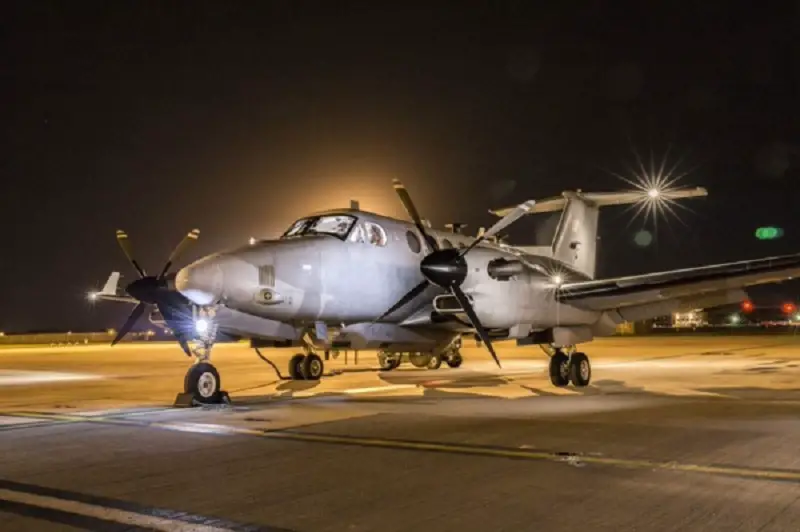Crews primed to operate the Royal Air Force’s updated Shadow Mk2 surveillance aircraft fleet are set to benefit from a bespoke UK-based training system. The Shadow Mk1 fleet, which provides the MOD with battle-winning intelligence gathering, is being expanded and upgraded, with Shadow Mk2 due to enter service in 2024 under a £110M contract placed with Raytheon UK in 2021. This contract secured 150 highly-skilled jobs, including specialist aerospace skills and apprentices at its Broughton facility in North Wales, and hundreds more within the Wales and wider-UK supply chain.
Royal Air Force personnel currently travel overseas for simulator training, but under a new £11.5M contract placed by Defence Equipment & Support with Raytheon UK, crews will be able to train on a Full Flight Simulator for Shadow Mk2 on home soil. The removal of overseas travel will reduce the MOD’s carbon footprint, increase access to quality training and is set to save up to £200,000 a year in efficiencies. The capability – a King Air 350 simulator – will also ensure the UK’s intelligence, surveillance, target acquisition, reconnaissance (ISTAR) Force is able to better support existing UK and overseas commitments.

“The provision of a new synthetic training facility represents a further enhancement to the Programme of Record that will deliver an exceptionally capable ISR asset to Defence. This is an exciting time for the programme as we prepare to accept delivery of our first Shadow Mk2 aircraft in 2024,” Air Commodore Hicks Senior Responsible Owner for Shadow said.
The contract award for a UK-based Full Flight Simulator follows the successful and on-time delivery of two strategic programme milestones in the preceding months. The news comes as Raytheon UK announced that it has passed a Critical Design Review (CDR) on its work to increase the current fleet of six reconnaissance aircraft to eight, and to integrate the latest UK Sovereign Defensive Aids Systems. Based at RAF Waddington and flown by 14 Squadron, Shadow forms a key part of the RAF’s ISTAR force by gathering intelligence via its high-definition electro-optical and electronic sensors. Once data is gathered, satellite communication links enable the information to be assessed while the aircraft is airborne during a mission. The simulator is expected to be in service with Shadow crews by late 2024.












